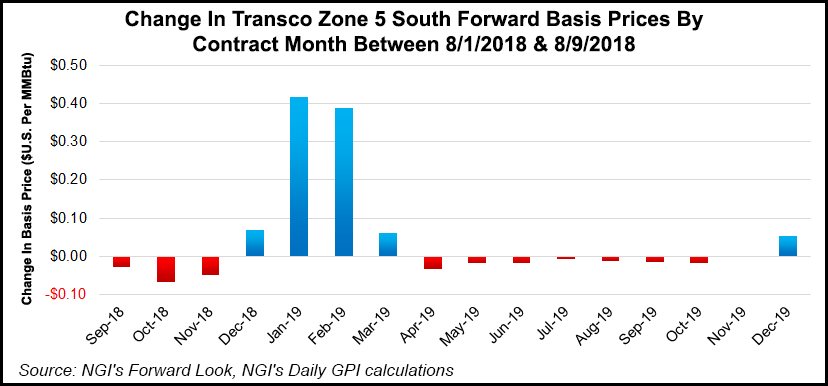Infrastructure | NGI All News Access | Regulatory
MVP Says More Pipeline Work Required Before Complying with FERC Order
Mountain Valley Pipeline LLC (MVP) has filed a 15-page plan to temporarily stabilize parts of its 300-mile route during a work stoppage ordered by FERC Aug. 3 in response to a federal appeals court decision that vacated project approvals.

The Federal Energy Regulatory Commission’s order indefinitely suspended construction and required MVP’s sponsors to submit the stabilization plan within five days for approval. In it, the company proposes to install up to 80 miles of additional pipeline, conducting limited work on compressor stations and interconnects, and other cleanup efforts to prevent adverse environmental impacts while most construction is on hold.
MVP said the plan would stabilize the project right-of-way (ROW) to minimize erosion and sedimentation, address safety concerns, including those associated with open trenches and allow it to monitor construction sites, among other things. “Temporarily stopping work on the project has the potential to cause impacts to sensitive environmental resources that would not have been caused with continued work,” MVP said in the plan.
FERC’s order came after the U.S. Court of Appeals for the Fourth Circuit last month vacated decisions by the U.S. Forest Service (USFS) and the Bureau of Land Management (BLM) that allowed MVP to cross a 3.5 mile segment of the Jefferson National Forest in Virginia and West Virginia. FERC leaned heavily on MVP’s vacated ROW across federal land that was approved by the BLM in deciding to halt construction. The matter has been remanded to the Department of Interior agencies for revisions consistent with the court’s opinion.
FERC’s Terry Turpin, director of the Office of Energy Projects, said in the order that the USFS and BLM could ultimately revise substantial portions of MVP’s route, which would require further authorizations and and environmental review. He said “allowing continued construction poses the risk of expending substantial resources and substantially disturbing the environment by constructing facilities that ultimately might have to be relocated or abandoned.”
Of particular concern, MVP said, are ROW and work areas that have already been trenched or where pipe has been strung along. “It is important that Mountain Valley install the pipe in all currently trenched areas,” it said. “This is critical to ensure that the ROW can be properly restored and sensitive environmental resources protected.”
MVP added that the most effective way to stabilize the ROW and ensure adequate access for environmental maintenance is to install the pipe in trenched, strung, and/or welded areas. Pipe segments that are staged on cribbing, for example, need to be lowered into the ground because they are exposed to ultraviolet light that could damage the pipe’s coating. Uncoated welds are also exposed to corrosion and the longer the pipe sits above ground, the longer it is vulnerable to vandals, MVP said.
The company estimates that 45 miles of pipeline for now would need to be installed to avoid such hazards. MVP also cautioned that if the work stoppage were not resolved by Sept. 1, it would likely need to install another 35 miles of pipe and perform additional work on associated facilities.
The company also plans to complete a horizontal directional drill at a river along the route, cautioning that stopping that work would increase the risk of a downhole failure or the equipment seizing.
The Fourth Circuit issued its opinion in response to cases brought by the Sierra Club, Wild Virginia and Appalachian Voices. The groups appear ready to fight the proposed work, with Sierra Club’s Kate Addleson, director of the Virginia Chapter, said in responding to MVP’s plan, “bless their hearts, but not in a million years.”
MVP would carry 2 Bcf/d from West Virginia to Virginia and connect with Transcontinental Gas Pipe Line to move gas to Southeast markets. FERC issued a certificate for the project in October, and construction started in February. Regulatory issues have already pushed back the project’s in-service date to 1Q2019. Substantial mechanical work remains on compressor stations, interconnects and construction spreads, according to a recent weekly status report filed at FERC.
© 2024 Natural Gas Intelligence. All rights reserved.
ISSN © 1532-1231 | ISSN © 2577-9877 |
